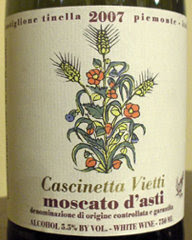Whole Foods Market used social media recently to help celebrate wines from New Zealand, the chain’s fall spotlight in the wine department. In a pair of virtual tasting events held on Twitter, tasters were invited to chime in with their impressions on the wines using the hashtag #WFMwine. Here is what some of the participants thought about the
Sophora Sparkling Cuvée:
@nzwineusa expressed a thought that resonated with many: “always a fan of going back for more bubbles.” In fact,
@MattMcGinnis tweeted, “Yeasty and full of ripe pear. We had to pour a second glass. Yum.” For
@WineHarlots, a favorite pairing came to mind: “I love fish & chips with sparkling wine.” The tasters taking part at
@WFMFlorida thought “the Sophora Sparkling Wine is stealing the show tonight,” while
@cloulew advised us all to “Stock up for the holidays. The bottle is beautiful.”
@wowaustin claimed, “The Sophora was def a fave here, even w/o sabering.” This came in response to
@DeniseClarkeTX’s boast of sabering the bottle open using a kitchen utensil. Sabering, by the way, is a wine-related party trick
which you can check out here. You may want a handful of disclaimers to go along with the video - “Don’t try this at home,” “sabered by a professional using an actual sword” or “your mileage may vary.”
I shared my Sophora with friends
Guido and
Tina, who had invited us over for dinner. They seemed to enjoy the festive bubbly, although they did not gush forth with tasting notes for me. Not being wine-obsessed, like me, they had somewhat reserved reactions. Tina liked the flavor, Guido liked the sweetness level. I liked the fact that it gave a great start to a lovely evening of food, drink and conversation.
Sophora’s golden tint and big bubbles are certainly festive enough, and the fruity nose of pear, citrus and bread was a hit with all. That big, yeasty, bready sensation continues to dazzle on the palate. The creamy mouthfeel makes it seem very rich. It's a blend of Chardonnay (52%) and Pinot Noir (48%) so its resemblance to Champagne is a fairly close one. Since the holidays are just about to come barreling down the tracks at us, you may want to keep this one in mind for seasonal entertaining. At $15, you can start a few parties of your own without too big a bite from your wallet.
Whole Foods’ wine department - they call them the Wine Guys - recommends pairings this sparkler with Rogue Creamery Oregon Blue cheese, French toast, bacon-wrapped figs, hazelnut shortbread, eggs Benedict and Baked Cranberry-Walnut French Toast. It makes a heck of a mimosa, too.
Follow Randy Fuller on Twitter








